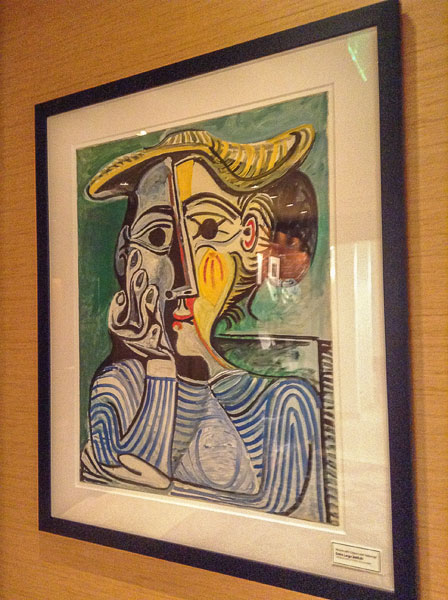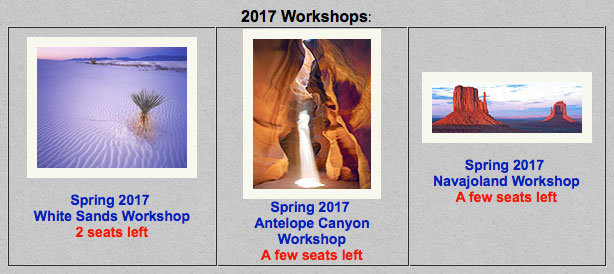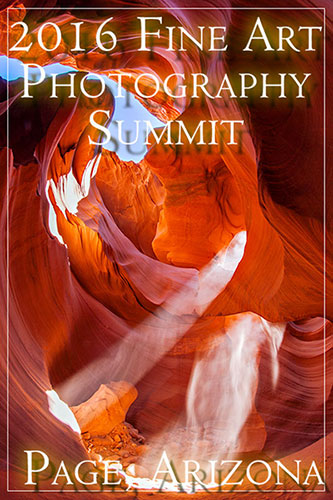

Credibility in art is not tied to how far you depart from reality.
Alain Briot
In 2013 Michael Reichmann published an essay titled The Art Of Fooling Around
In this essay Michael made the point that photographers are shy when it comes to expressing themselves through their photographs. In Michael’s opinion this is due to the desire to have their photographs taken seriously by the photographic community.
In other words photographers want their work to have credibility and for for them having credibility means not Photoshopping their images. In the beginning of digital photography this meant not Photoshopping at all. Now that digital has become the norm and that everyone uses it, it means not Photoshopping too much.
This attitude is just as ridiculous as trying to develop a personal style that is not too personal. Just like you have a personal style or you don’t, you either Photoshop your work or you don’t. If you make art rather than documentation, which is the point of this essay, then how much Photoshopping you do is irrelevant. Do people ask how far from reality are Van Gogh’s paintings? Do they ask if his colors are more saturated than the natural colors of his subjects? No one does because no one cares. No one cares because credibility in art is not linked to how far you depart from reality.
The problem is that photographers have tied artistic credibility with lack of photographic manipulation. As a result the discourse centers around how much and what kind of Photoshopping was done. Because there is no easy way to quantify or legitimize it, all artistic photography is negatively affected. How far your work departs from reality becomes the measuring stick used to define its credibility. Everyone jockey’s into position trying their best to depart just enough to be different but not so much as to lose credibility. The outcome is a ridiculous situation in which everyone loses and little art is produced.
The solution is to not care about manipulation because we are doing art and credibility in art is not linked to the presence or the absence of manipulation. Instead, credibility in art is tied to not placing limits on what we do, on being free to create whatever our heart desires.
Photography has many uses and it is important to remind ourselves that artistic photography is what we are doing. Not documentary photography. Not forensic photography. Not scientific photography. Artistic photography. Art is not a field upon which limits can be placed. In fact, and to return to credibility, it is the lack of self-imposed limits that gives art its credibility. Impose limits and art becomes questionable. Lift these limits and art becomes legitimate. The only challenge is that to do so you must stop caring about what people think and start focusing upon what you want to express.
This approach, this lack of caring about what other people think, is what revolutionized art in the turn of the 20th century. At that time, as Michael writes in his essay:
Painting liberated itself from the shackles of academic ‘correctness.’ The Impressionists, the Cubists, the Pointillists and all of the other movements at the time said ‘Screw it. Straight representational painting has gotten boring. Let’s shake things up.’ And thus we ended with Picasso, Chagal, Degas, Monet and the rest of the gang that revitalized painting in the late 19th and early 20th century.
This approach lifted art out of the stiff academic approach that characterized earlier paintings. Above all, these artists had fun. Fun has a lot to do with creativity. I doubt that the academic painters before them had much fun. They took themselves too seriously and as a result their work became static. Just like photographers today, they feared not being taken seriously and this fear kept them within the safe and tight boundaries of the established style of the time. Fun, and the decision to not care about what others thought, the decision to ‘screw it’ as Michael says, is what brought about the artistic revolution that took place at the turn of the century.
As Abraham Maslow puts it: Almost all creativity involves purposeful play. While this statement may be formal, its veracity is inevitable. In other words: no play, no creativity. Another way to put it is that academism kills art. Academism is what will happen to photography if we continue to enshrine the masters and make our life-long goal to duplicate their work.
Great artists come and go and their work is worth studying and admiring. However in our own work we need to do something different than what they did if we want to further the artistic process and keep the medium alive. We cannot compare ourselves to the masters because we are not them. We need to find news ways of creating our style because there is no ‘right’ way to do anything. The best way to do that is to focus on our goals and have fun. In the end, as Michael writes
All that matters is that you take the photographs that you want to take and interpret them the way your artistic sense dictates. Other’s don’t like it? Fine, what else is new? Art is there to express an individual’s opinion of the world, not be pretty and acceptable. That’s the domain of the decorative arts, which sadly is where much so-called fine art photography is often found.
What matters in the end is not what we do in Photoshop. What matters is our opinion of the world and having the desire and the ability to express it in our work.
I expect most photographers to know where they stand in regards to Photoshopping. I also expect most to have an opinion about the world. However how many express that opinion through their photography is another matter. In my experience very few do. And of those that do even fewer have fun doing so in a style that is unique to them. Too many are concerned with losing credibility by being too personal.
It is therefore of utmost importance to root artistic credibility not in the presence or absence of Photoshopping but in the desire to not place limits on our work. No matter how we look at Photoshopping, the minute we start to discuss the amount or the nature of the transformations we apply to our images we are placing limits on what we can do.
The best approach to follow in order to give credibility to artistic photography is to say ‘Let’s not impose limits on our work. Instead, let’s just do what we please.’ If someone expresses their discontent or is critical of our work we can tell them what Michael says: Fine, what else is new? Art is there to express an individual’s opinion of the world, not be pretty and acceptable. Only by doing so will we be free to have fun, explore and create.

Picasso was certainly not shy about expressing his vision in his work. He also did not tie credibility with being faithful to reality otherwise he would not have painted this woman with the colors, the facial geometry, the proportions and the other non-realistic features present in this painting.
Instead, legitimacy for him was being faithful to his vision and to his personal goals. In the instance of this painting, which was created towards the end of his life, his goal was to paint like a child, something quite difficult because it required him to shed a lifetime of learning baggage. A true masterpiece, this painting is also a thumb nose to those who say that his work is childlike.

In some locations, such as Antelope Canyon, being faithful is futile. Locations that are unlike anything else, or that few if any have seen, or subjects that are naturally abstract and hence with few if any references to a real subject, don’t call for being reproduced faithfully. While doing so is an option, I argue that it was the choice of film photographers because few other option was available to them.
Creating non-manipulated photographs was the option adopted by film photographers. This approach was successful because of the subject’s natural abstract qualities. However, it has been done. What else can we possibly do to improve on it? Make it more detailed? There’s only so much detail a print can hold and I feel we have reached maximum capacity. Make it sharper? We already have the sharpest lenses so more sharpness won’t do much to improve on that. Are we forever stuck into representing the same subjects in the same way? If we don’t look elsewhere besides sharpness, resolution or dynamic range, this may be our lot.
Workshops with Alain and Natalie Briot
If you enjoyed this essay you will enjoy attending a workshop with us. I lead workshops with my wife Natalie to the most photogenic locations in the US Southwest. Our workshops focus on the artistic aspects of photography. While we do teach technique, we do so for the purpose of creating artistic photographs. Our goal is to help you create photographs that you will be proud of and that will be unique to you. The locations we photograph include Navajoland, Antelope Canyon, Monument Valley, Zion, the Grand Canyon and many others. Our workshops listing is available at this link.

About Alain and Natalie Briot
You can find more information about our workshops, photographs, writings and tutorials as well as subscribe to our Free Monthly Newsletter on our website at http://www.beautiful-landscape.com. You will receive 40 free eBooks when you subscribe to my newsletter.
Alain creates fine art photographs, teaches workshops with Natalie and offers DVD tutorials on composition, image conversion, optimization, printing and marketing. Alain is the author of Mastering Landscape Photography, Mastering Photographic Composition, Creativity and Personal Style, Marketing Fine Art Photography and How Photographs are Sold. All 4 books are available in eBook format on our website at this link. Free samplers are available so you can see the quality of these books for yourself.
Alain Briot
September 2016

Lorem ipsum dolor sit amet, consectetur adipiscing elit, sed do eiusmod tempor incididunt ut labore et dolore magna aliqua. Ut enim ad minim veniam, quis nostrud exercitation ullamco laboris nisi ut aliquip ex ea commodo consequat. Duis aute irure dolor in reprehenderit in voluptate velit esse cillum dolore eu fugiat nulla pariatur. Excepteur sint occaecat cupidatat non proident, sunt in culpa qui officia deserunt mollit anim id est laborum.
Lorem ipsum dolor sit amet, consectetur adipiscing elit, sed do eiusmod tempor incididunt ut labore et dolore magna aliqua. Ut enim ad minim veniam, quis nostrud exercitation ullamco laboris nisi ut aliquip ex ea commodo consequat. Duis aute irure dolor in reprehenderit in voluptate velit esse cillum dolore eu fugiat nulla pariatur. Excepteur sint occaecat cupidatat non proident, sunt in culpa qui officia deserunt mollit anim id est laborum.
Lorem ipsum dolor sit amet, consectetur adipiscing elit, sed do eiusmod tempor incididunt ut labore et dolore magna aliqua. Ut enim ad minim veniam, quis nostrud exercitation ullamco laboris nisi ut aliquip ex ea commodo consequat. Duis aute irure dolor in reprehenderit in voluptate velit esse cillum dolore eu fugiat nulla pariatur. Excepteur sint occaecat cupidatat non proident, sunt in culpa qui officia deserunt mollit anim id est laborum.
Lorem ipsum dolor sit amet, consectetur adipiscing elit, sed do eiusmod tempor incididunt ut labore et dolore magna aliqua. Ut enim ad minim veniam, quis nostrud exercitation ullamco laboris nisi ut aliquip ex ea commodo consequat. Duis aute irure dolor in reprehenderit in voluptate velit esse cillum dolore eu fugiat nulla pariatur. Excepteur sint occaecat cupidatat non proident, sunt in culpa qui officia deserunt mollit anim id est laborum.

Lorem ipsum dolor sit amet, consectetur adipiscing elit, sed do eiusmod tempor incididunt ut labore et dolore magna aliqua. Ut enim ad minim veniam, quis nostrud exercitation ullamco laboris nisi ut aliquip ex ea commodo consequat. Duis aute irure dolor in reprehenderit in voluptate velit esse cillum dolore eu fugiat nulla pariatur. Excepteur sint occaecat cupidatat non proident, sunt in culpa qui officia deserunt mollit anim id est laborum.
Lorem ipsum dolor sit amet, consectetur adipiscing elit, sed do eiusmod tempor incididunt ut labore et dolore magna aliqua. Ut enim ad minim veniam, quis nostrud exercitation ullamco laboris nisi ut aliquip ex ea commodo consequat. Duis aute irure dolor in reprehenderit in voluptate velit esse cillum dolore eu fugiat nulla pariatur. Excepteur sint occaecat cupidatat non proident, sunt in culpa qui officia deserunt mollit anim id est laborum.
Lorem ipsum dolor sit amet, consectetur adipiscing elit, sed do eiusmod tempor incididunt ut labore et dolore magna aliqua. Ut enim ad minim veniam, quis nostrud exercitation ullamco laboris nisi ut aliquip ex ea commodo consequat. Duis aute irure dolor in reprehenderit in voluptate velit esse cillum dolore eu fugiat nulla pariatur. Excepteur sint occaecat cupidatat non proident, sunt in culpa qui officia deserunt mollit anim id est laborum.

Lorem ipsum dolor sit amet, consectetur adipiscing elit, sed do eiusmod tempor incididunt ut labore et dolore magna aliqua. Ut enim ad minim veniam, quis nostrud exercitation ullamco laboris nisi ut aliquip ex ea commodo consequat. Duis aute irure dolor in reprehenderit in voluptate velit esse cillum dolore eu fugiat nulla pariatur. Excepteur sint occaecat cupidatat non proident, sunt in culpa qui officia deserunt mollit anim id est laborum.

Lorem ipsum dolor sit amet, consectetur adipiscing elit, sed do eiusmod tempor incididunt ut labore et dolore magna aliqua. Ut enim ad minim veniam, quis nostrud exercitation ullamco laboris nisi ut aliquip ex ea commodo consequat. Duis aute irure dolor in reprehenderit in voluptate velit esse cillum dolore eu fugiat nulla pariatur. Excepteur sint occaecat cupidatat non proident, sunt in culpa qui officia deserunt mollit anim id est laborum.
Lorem ipsum dolor sit amet, consectetur adipiscing elit, sed do eiusmod tempor incididunt ut labore et dolore magna aliqua. Ut enim ad minim veniam, quis nostrud exercitation ullamco laboris nisi ut aliquip ex ea commodo consequat. Duis aute irure dolor in reprehenderit in voluptate velit esse cillum dolore eu fugiat nulla pariatur. Excepteur sint occaecat cupidatat non proident, sunt in culpa qui officia deserunt mollit anim id est laborum.

Lorem ipsum dolor sit amet, consectetur adipiscing elit, sed do eiusmod tempor incididunt ut labore et dolore magna aliqua. Ut enim ad minim veniam, quis nostrud exercitation ullamco laboris nisi ut aliquip ex ea commodo consequat. Duis aute irure dolor in reprehenderit in voluptate velit esse cillum dolore eu fugiat nulla pariatur. Excepteur sint occaecat cupidatat non proident, sunt in culpa qui officia deserunt mollit anim id est laborum.
Lorem ipsum dolor sit amet, consectetur adipiscing elit, sed do eiusmod tempor incididunt ut labore et dolore magna aliqua. Ut enim ad minim veniam, quis nostrud exercitation ullamco laboris nisi ut aliquip ex ea commodo consequat. Duis aute irure dolor in reprehenderit in voluptate velit esse cillum dolore eu fugiat nulla pariatur. Excepteur sint occaecat cupidatat non proident, sunt in culpa qui officia deserunt mollit anim id est laborum.
